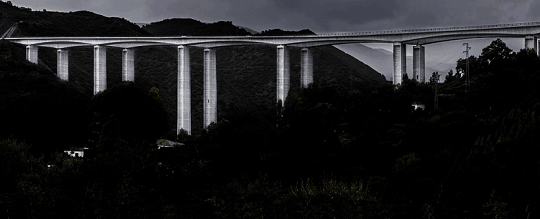
Javier Manterola is one of Spain’s most remarkable civil engineers. He is a professor at the Madrid Higher School of Engineering and a member of the Royal Academy of Fine Arts of San Fernando. Manterola has received numerous awards for his work in bridge design and other fields, including the Príncipe de Viana Culture prize and the Spanish National Engineering Award. The following paragraphs, authored by Manterola himself, are part of one of the book “60 looks at Ferrovial“.
A bridge is a very special structure, a simple function that represents a difficult problem. Designing a bridge to withstand the load, to span 30 metres in the past, and 300 or 3,000 metres in the present day, means one is always pushing the limits of what is possible. That is one of the features of bridges as structures: they force us to explore beyond the bounds of what we know. What material to use, how to supply it on site, whether on a riverbank or 1,000 meters from the shore, assisted only by our own resources.
The essence of a structure is how it configures and orders its parts so as to transfer the loads, from choosing the proper location to ensuring adequate foundations. How the bridge stresses and deforms as it withstands and transfers the load. But thinking about resilience involves conceiving the idea of strength, how the structure will stand while under construction.
I used to think of a bridge as a biological organism that is configured as it comes into being and takes on its final form at the end of the process. But a bridge is not an organism that grows and develops; true, it grows and develops until it attains its final form and strength, but that is because we configure it thus; therefore, its final form incorporates the fact that it will go from nothingness to being. The construction process is part of the essence of a bridge, inseparable from the loads it is to withstand and the way in which it will do so.
A bridge must be designed to carry and transfer major loads while spanning considerable distances; whereas old Roman bridges spanned 30-40 metres at most, modern bridges can span 500 metres. Yet the ancients successfully solved the problem of strength and construction with voussoirs. A masonry arch is made up of voussoirs, stones cut to a certain shape and with a manageable weight which, when properly assembled, provide a load-bearing structure. The voussoir is the core component of an arch, regardless of the construction procedure.






There are no comments yet